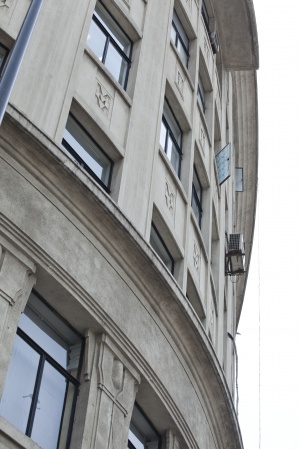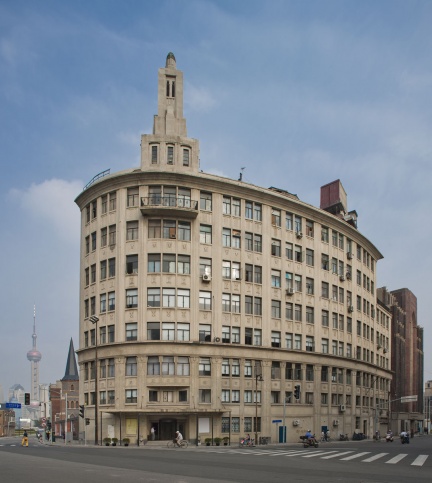LOCATION No.142-146 Hu Qiu Road
Type Historical
The late 1920s was the era of Art Deco emergence in Shanghai. The Capitol Theater, built in the 1920s, was a typical Art Deco building, with decorative patterns and reliefs on the top and surrounding walls. The interior of the building applied burgundy and amber-colored concrete and glass, creating a modernist visual.


The film industry was booming around the late 1920s: movies had become a popular entertainment for the rich in Shanghai. The Capitol Theatre Building used to be one of the many high-end theatres serving for the upper class in the city. Its building structure, nevertheless, was one of a kind: the bottom floors were the movie theater, and the upper parts were the offices of film companies. This was rare in Shanghai in the last century.
The first and the second floors of the building were the theatre: the auditorium was divided into upper and lower floors, with nearly a thousand seats. Among them, there were 580 seats on the first floor, 362 seats on the second floor, and 32 private boxes. The modern facilities inside were very commendable: It was the first air-conditioned movie theater in Shanghai with air purification equipment. People then praised it as “cool in summer and cool in winter”. In the era when electric fans were even not yet popular, the air conditioner was a symbol of modernity. The Capitol Theatre was also the first theater in China to adopt a column-free design. In order to ensure the unobstructed view of the audience, the theater adopted the design of fire spray guns and sniper rifles, all of which reflected the designers’ edginess.
The French film “Casanova”(1927) was screened during the Capitol Theater’s grand opening at 9:15 p.m. on February 25, 1928. The film starred the famous Russian actor Ivan Mosjoukine and broadcasted the extraordinary story of an Italian man Casanova being prisoned. The theater advertised that the play has a "flavorful plot with strange interludes". After the film was released, it caused a sensation among movie fans in Shanghai. So far, this film is still regarded as a classic of the silent film era in Europe.
The Capitol Theater was also a place frequented by Lu Xun, a well-known Chinese author. Believe it or not, Lu’s favorite movie was the cartoon Mickey Mouse and Puss in Boots. He accompanied his son and his wife to the theatre at least 4 times from 1933 to 1934 to watch these films, and this was his rare leisure during his late years.
The Capitol Theater was not only a place of entertainment for fashionable people, but also a place where world-known film companies gathered, a birthplace of foreign language films in Shanghai. From the end of the 1920s to the beginning of the 1940s, five of the eight major film companies in the United States set up their Chinese headquarters in the Capitol Building, which included Paramount, Columbia, 20th Century Fox, Warner Bros. Entertainment Inc., and United Artists.
Although the old Capitol Theatre has long gone, the classy Capitol Theatre Building is still standing on the street corner. The ancient and classic architectural style has experienced more than a hundred years of ups and downs, and we cannot wait to see its new appearance after the restoration is completed.
Architectural watercolor painting by: Lu Jun



